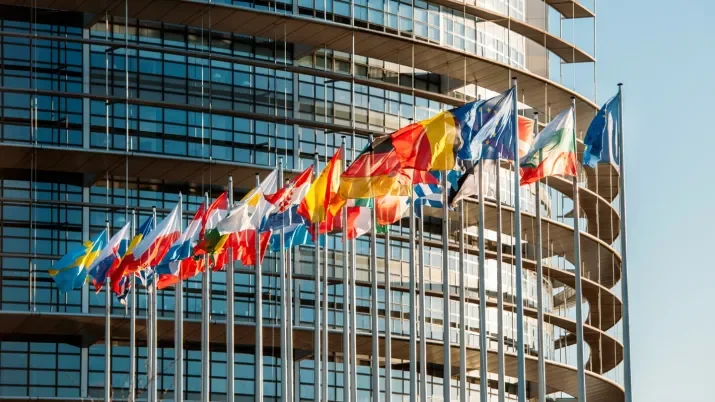Thames Water – A fluid situation
We previously blogged about Thames Water in July last year but it’s rapidly refloated to the top of UK credit market concerns.
For the uninitiated the key context is:
Talk of potential nationalisation of the private utilities company that supplies most of Greater London and much of the south of England emerged following the governments concern regarding the company’s operational issues and financial stability. However, these concerns were alleviated following commitment from the shareholders to inject a total of £3.25 billion of equity to fund operational improvements and ease balance sheet pressure.
This commitment reassured the markets, leading them to believe that it would stave off any immediate government intervention. It’s worth noting that £750 million of this equity was to be injected in the short term, with £500 million expected by the end of March. However, a crucial aspect that many overlooked was that this equity support was contingent upon Ofwat, the UK's water services regulator, setting the allowed returns at a level that ensured the investment's viability for shareholders.
In a turn of events on March 28, Thames Water released a statement revealing that the conditions set by shareholders had not been met due to Ofwat's allowed returns, rendering Thames Water "uninvestible”. A statement read:
“Based on the feedback provided by Ofwat to Thames Water to date, the regulatory arrangements that would be expected to apply to Thames Water in AMP8 make the PR24 plan uninvestible. As a result, the conditions of the support letter from July 2023 have not been satisfied and the first £500 million of the new equity that had been anticipated will not be provided by Thames Water’s shareholders by 31 March 2024”.
As a reminder, Ofwat’s primary role is to approve water company business plans and set customer bills, which subsequently determines the allowed returns for investors. The regulatory period in the UK spans 5-years, and water companies are currently engaged in negotiations with Ofwat regarding allowed returns for the next regulatory period (AMP8) spanning from 2025 to 2030. Ofwat are due to publish their draft determinations in May/June this year, following which there will be further negotiations between both parties before the final determinations are reached by December.
Currently, Thames Water shareholders are reportedly hesitant to inject additional capital. Consequently, both Moody’s and S&P have downgraded the company to BBB- with a negative outlook. This downgrade didn't come as a surprise to the markets, as both agencies cited concerns regarding the company’s financial health and its ability to execute the crucial £18.7 billion investment plan necessary to restore operational performance in the upcoming five-year regulatory period. Under Ofwat's regulation, a BBB- rating with a negative outlook triggers a cash lock-up at the operating company, thereby restricting any cash flow to the Holdco.
Thames Water has a complex capital structure, with the operating company (Thames Water Utilities) protected by a regulatory ringfence, housing £16.5 billion of debt. This operating company is owned by the holding company Kemble, which carries an additional £1.35 billion of debt. Shareholders inject equity into Kemble, which is then invested in the operating company to support its operations. The expectation is to receive dividends from the operating company to Kemble, which can then be distributed to investors after debt payments. This was case when under the previous ownership of Macquarie who were accused of siphoning off £2.7 billion of dividends whereas current shareholders have received nothing.
Kemble relies on dividends from the operating company to meet its debt service obligations. With the cash lock-up at the operating company and shareholders unwilling to inject more capital, Kemble has received a notice of default on its debt due to a missed interest payment last week. Additionally, Kemble has a £190 million loan repayment due on April 30, which it will reportedly be unable to fulfil without an extension granted by lenders. In summary, Kemble will lack any funds without an equity injection. Thames has therefore asked lenders not to take any action as it explores options.
With that background explained, where do we think Thames Water go from here?
- An agreement between shareholders and the regulator is reached on a level of allowed returns that works for both parties with Ofwat likely offering modest concessions on higher customer bills; while talks have reached a stalemate, there's still a slim chance of a deal being reached.
-
Special Administration Regime (SAR) – entails temporary nationalisation wherein the government assumes temporary ownership and operational control of the company while seeking a buyer. Bulb Energy, at the time the UK’s seventh largest energy firm that went bust in 2021, was placed under SAR until it was bought by Octopus Energy in 2022. While it doesn’t appear the government have much appetite to get involved, it may become necessary to protect critical UK infrastructure and going down the SAR route seems like the most likely choice.
- Under this scenario the government would need to right size the balance sheet and potentially carve the business into more manageable parts to attract a buyer. Shoring up the balance sheet could be in some form of government injection or worst-case a debt restructuring that would entail haircuts on Thames Water’s bonds.
- In the weekend press both the Telegraph and Guardian in the UK have hinted towards a breakup of Thames Water into one business covering London, and the other serving the rest of the south-east.
- Full nationalisation? We think this remains unlikely. It’s not typically in the Conservatives playbook and it is also something they would surely rather avoid in an election year. However, it is clearly important for them to protect the UK’s critical infrastructure so it cannot be ruled out. Should this situation drag on until Labour take power (almost certainly later this year), we believe full nationalisation is much more likely. Although not likely to be outlined in their manifesto, nationalising the UK's worst-performing utility and in doing so inflicting losses to shareholders and Holdco lenders, might resonate with some voters.
- Alternatively, following release of draft determinations in May/June, Thames Water expects to be in a better position to attract new investors. However, given the Thames Water investment case is not exactly an attractive one at this point, attracting new investors looks to be a challenging if not impossible task.
Ultimately, the risk of SAR has clearly grown in the past week. If no agreement can be reached with shareholders and lenders it does seem the most likely scenario going forward in our view.
For bondholders the concern is whether the government is forced to inflict haircuts to de-lever the company to a manageable level to attract a buyer. Under this scenario, debt at Kemble (CC rated) would almost certainly be wiped out, however, it is within the regulatory ringfence where things are more complicated. Here there is £15 billion of Class A debt (rated BBB-) and £1.3 billion of Class B’s (BB- rated).
The Class A debt is likely held by traditional investment-grade asset managers and institutional investors who favour the defensive attributes of the utilities sector. These investors typically aren't exposed to restructuring and bond haircuts. Conversely, the Class B bonds are more likely held by high-yield investors and some hedge funds. Should the government wish to reduce leverage to Ofwat's target gearing of between 55-60% (net debt/regulated asset value), a rough estimate suggests that Class B bonds would be zeroed, while Class A bonds might face haircuts ranging between 15-25%.
While mathematically a haircut for bondholders is needed, there are very strong reasons why we think the government and regulator should avoid this.
For any government, maintaining the credibility of investment into the UK utilities sector is paramount. While the situation at Thames Water is an idiosyncratic one, any write-down of investment-grade bonds within a regulated ringfence would prompt investors, especially institutional ones attracted to the sector for its long-term predictable cash flows, to reassess the risks within the sector and the premium it traditionally warrants.
Should investors demand a higher risk premium for the UK water sector, the cost of capital for water companies will rise, ultimately leading to higher bills for end customers — an outcome both Conservative and Labour government would seek to avoid. Therefore, while these challenges have been apparent to investors for some time, we believe avoiding any write-down on Class A bonds is vital for the sector's long-term future, which according to Moody’s needs to issue between £45-50 billion over the next regulatory period, AMP8, which runs to 2030.
Approximately £10 billion of this issuance is expected from Thames Water, which as recently as January this year demonstrated its market access issuing a 7-year and a 20-year Class A bond at +335 basis points (bps) – with a 7.125% coupon - and +320 bps - with a 7.75% coupon - respectively. Despite the ongoing challenges facing the company, demand was exceptionally strong, with over £3 billion of orders for the £850 million deal. To put these financing costs in perspective relative to the sector, Severn Trent Water, the second largest of the UK’s water services companies by revenue and widely regarded as best in class, trades at +100 bps for a similar 20-year maturity. Since the issuance in January, the 20-year Thames Water bond currently trades at +345 bps, only marginally wider than its issuance spread, highlighting how much negative news had already been priced into the name. However, given investors demand around triple the credit spread for Thames Water versus peers in the water sector it is easy to see why the business is not considered financially viable.
For 1 in 4 Brits who are Thames Water customers, the current situation has no immediate impact. The regulatory ringfence at the operating company protects it from the issues at Kemble, ensuring that operations can continue as usual for the time being. As of February 29, 2024, the company had £2.4 billion in cash and liquidity facilities, which it projects can sustain its operations until June 2025. This ample runway should give the company time to explore and implement a solution, whatever form it may take.
While the bulk of the blame is being laid at Thames Water, the regulator must also shoulder some of the responsibility. In previous pricing reviews, where company investment plans, customer bills, and allowed returns are determined, in our view the regulator was overly focused on keeping customer bills low. This led them to overlook some of the operational challenges now confronting the sector. The emphasis on low bills resulted in inadequate returns for investors, disincentivising investment in the sector and is the reason consumers are faced with the prospect of water bills increasing by 40% by 2030. This issue extends across the sector, with every water company requiring significant investment to upgrade infrastructure and mitigate pollution and sewage spills.
We have maintained a negative view on Thames Water for some time due to several factors, including their leaky environmental record, evidence suggesting greenwashing, and poor governance. We think these concerns were exacerbated by the mismanagement of previous private equity owners, who overleveraged the business, contributing to its current challenges.
While recent events surrounding Thames Water do not come as a surprise, it remains crucial for both the government and regulators to uphold the integrity of the UK water and utilities sector. We think it's imperative to avoid any haircut to bonds within the regulatory ringfence thus preserving the long-term investment viability of the sector and ensuring investor confidence remains intact.
Furthermore, while this is an idiosyncratic story it is another example of an over-levered business that looks to have been mismanaged during a period of low rates and no longer sustainable in its current form. We anticipate similar stories to emerge as companies and investors adapt to the new market paradigm. As investors it pays to be prudent in a post-QE market that now punishes underperformance.



